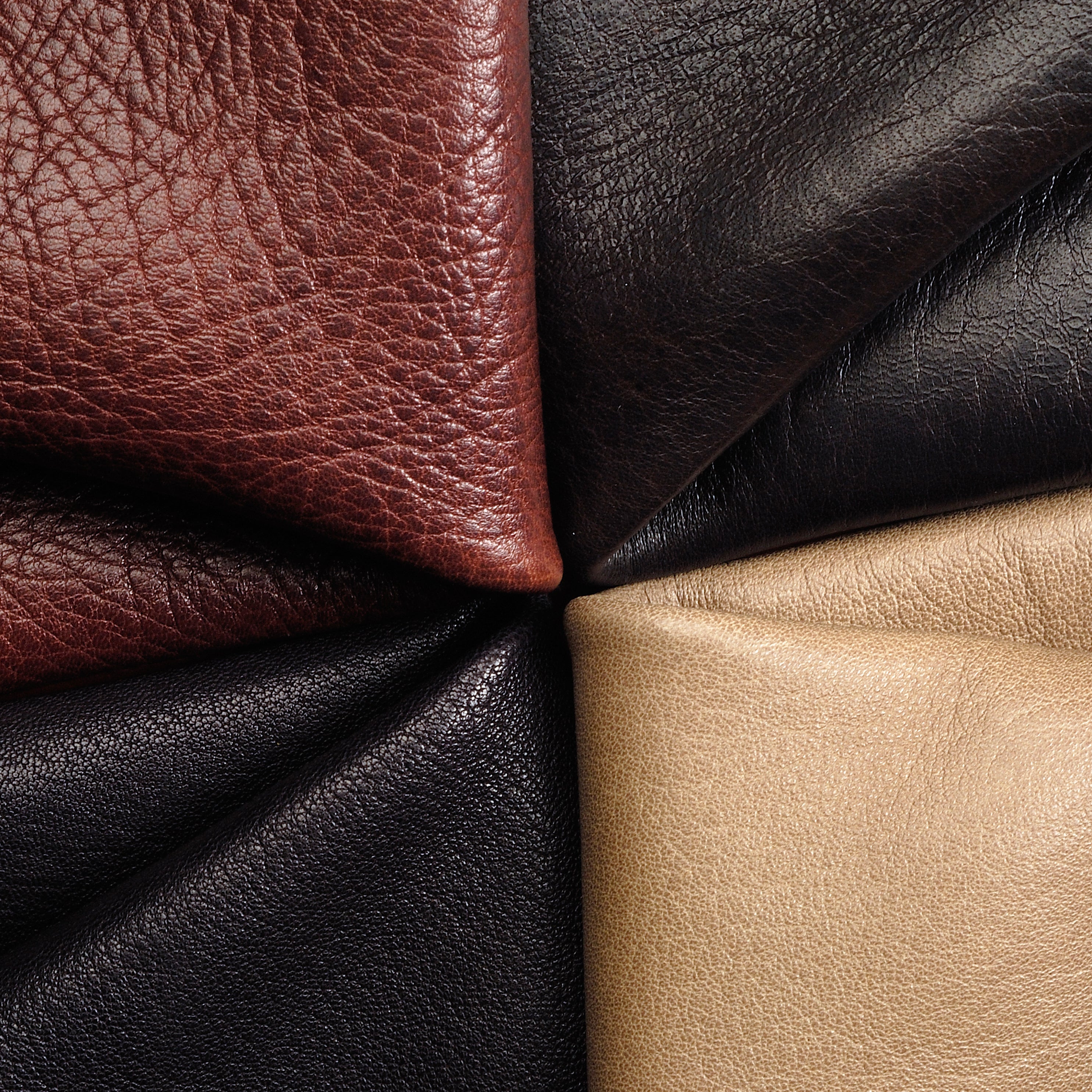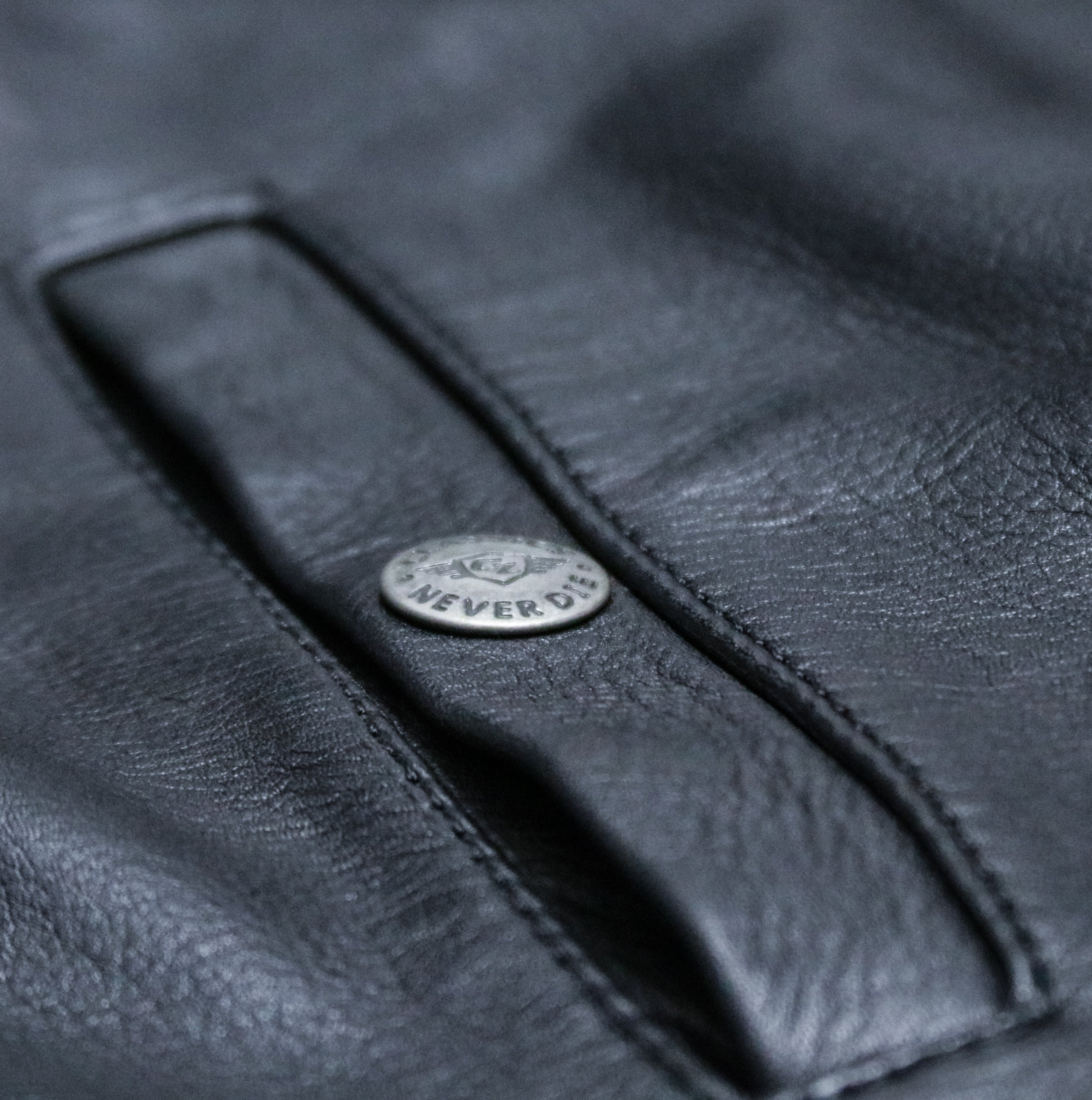Article: Different Types of Leather For Jackets

Different Types of Leather For Jackets
Leather Guide by CAMOKAZI
Nothing beats a good quality leather jacket. The unique features of leather such as the feel, durability, comfort and the way it warps to your body shape over time, these all make leather jackets great to wear.
The problem, however, is there are many different types of leather for jackets, and many companies do not always label exactly what type of leather has been used. You’ll often find items labelled as just ‘Real Leather’ and many times these are either bad cuts or not of very good quality.
It’s very important to know what leather is used as each has their own features. Therefore, we at CAMOKAZI™ have created a leather guide that explains the difference between all the types of leather you can get and also the different types of finishes. We hope this helps in your quest to find the perfect leather jacket or accessory.
Cowhide Leather & Buffalo Leather
First up in our leather guide is our most popular type of leather for jackets. Cowhide and buffalo leather are of the strongest forms of leather out there. It has a high abrasive resistance, which means it offers great protection and is usually heavier than most other types of leather used for jackets.
Depending on how thick and thin the leather is split will determine the softness of the leather. For example most high-end brands will use a much thinner split of cowhide in jackets for a softer feel whilst still maintaining its strength. Bags and belts will usually be thicker and heavier as they are put under more tension and require more strength.
If you require a high quality jacket for regular wear that can be worn in all conditions, cowhide leather is recommended.
Lamb & Sheep Leather
Lamb and sheep leather are popular due to their soft and supple feature. They are a lot more lighter and thinner therefore perfect for times where you require a thin layer on. Lamb and sheep leather are very soft to touch and is an excellent choice for comfort and style.
Lamb and sheep leathers are not as strong as cowhide due to its suppleness but are still fairly strong. Accessories such as bags and belts are not recommend in these leathers as its cowhide alternatives are better due to its strength advantage.
If you require a lightweight jacket that you can wear on nights out, looking classy and stylish then lamb or sheep leather is a great choice.
Pig Leather
The cheapest type of leather on the market.
Pig leather lacks durability and has a thin plastically feeling. The durability of jackets made of pig leather is much lower than the other types mentioned in this leather guide, and will usually be the type of leather used when you find cheap jackets labelled ‘real leather’. However, these jackets can be an alternative for those who are looking for a leather jacket on a budget and don’t mind lower quality.
Once the hide has been chosen the next step is to look at the leather tanning process. Different tanning processes will affect the leather appearance and physical elements.
Full Grain/ Natural Grain
Full grain leather is the most expensive part of the leather as it comes from the top layer of the hide below the hairs, which is the strongest and most durable part of the hide.
Furthermore the natural grains are much tighter therefore resists moisture very well but still has great breathability. The tightness also contributes to its strength, so a thin layer of cowhide with natural grain will be much stronger than its equal without grains.
Nappa
Nappa is the general term for particularly soft chrome tanned leather of cow and lamb leather, which gives it a unique and expensive appearance. A Nappa finish is complicated and a time consuming, but this tanning process makes this leather the best in terms of softness, suppleness and amazing durability.
Aniline
Aniline is a chemical that allows the natural characteristics of the skin to be visible because they are not covered by paints and coatings. This still produces soft leather, but, the leather is sensitive to dirt and bleaching out caused by sunlight. This is more suited for brown and tan leather jackets.
Nubuck
This is top grain leather that has been sanded or buffed on the grain side or outside to give a soft finish and it has a suede-like texture. But, it is priced at the upper end of the spectrum and is more susceptible to water staining.
Suede
Suede is used for the underside of the hide as the full hide isn’t used. It lacks strength and durability. It is prone to water staining unless it has been treated to prevent this.
We hope this guide has given you a good idea about the different types of leather and will help you make an informed choice when purchasing any leather item. But if you have any more questions on this leather guide or about the types of leather for jackets, contact CAMOKAZI today, or browse all leather jackets here.


Leave a comment
This site is protected by hCaptcha and the hCaptcha Privacy Policy and Terms of Service apply.